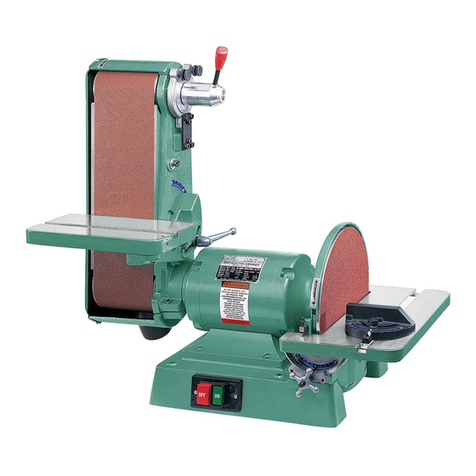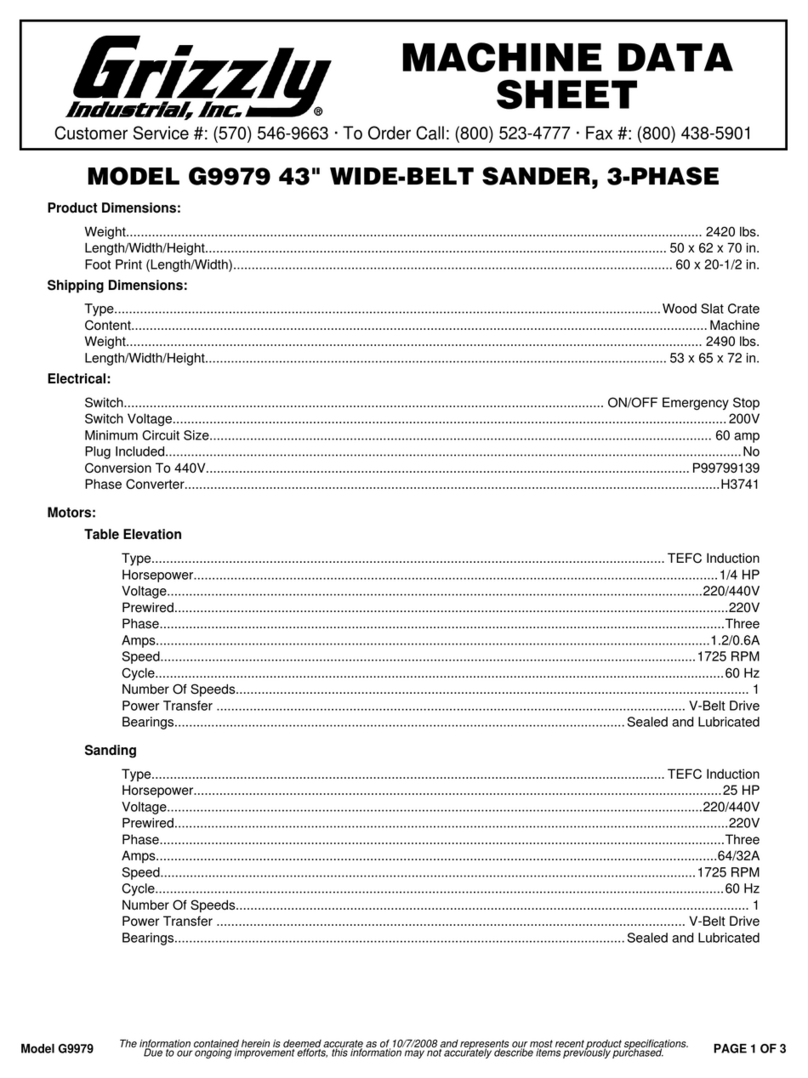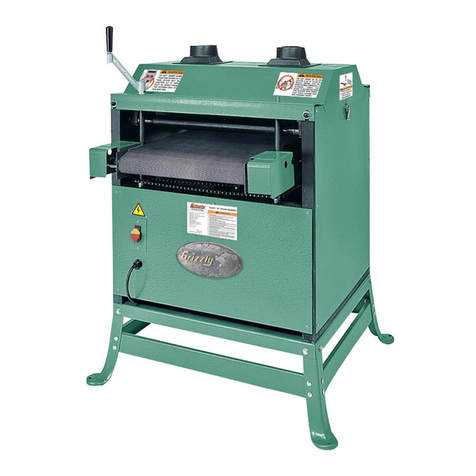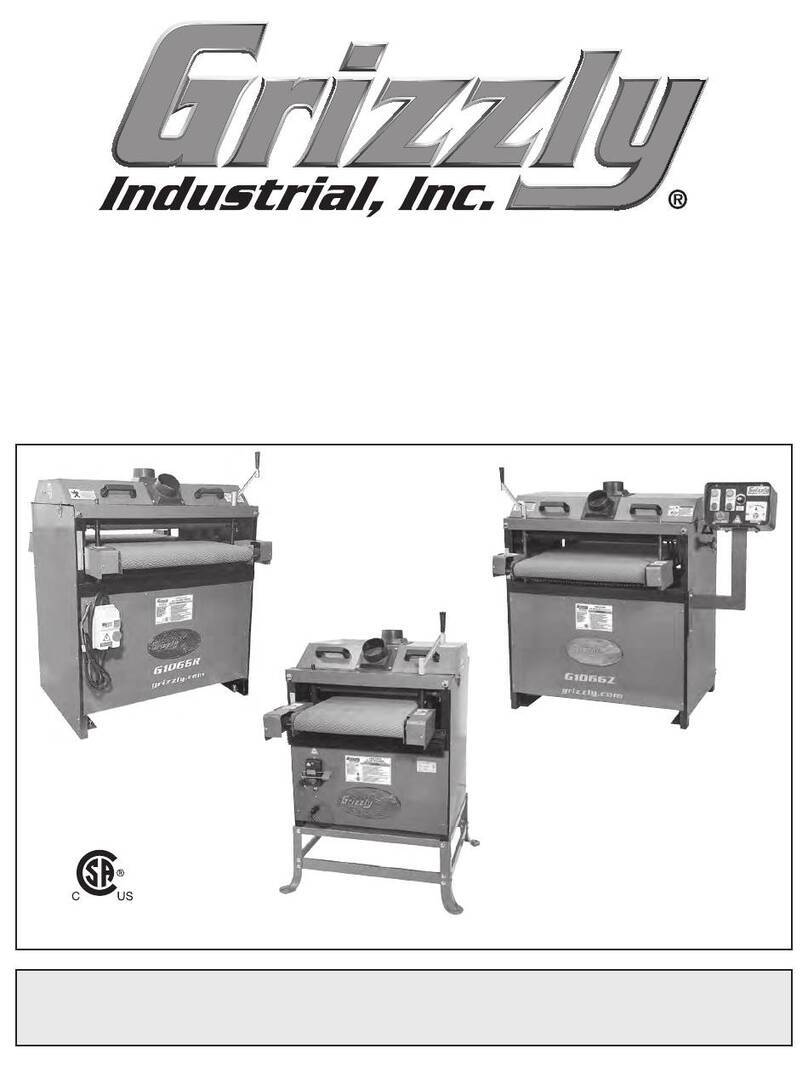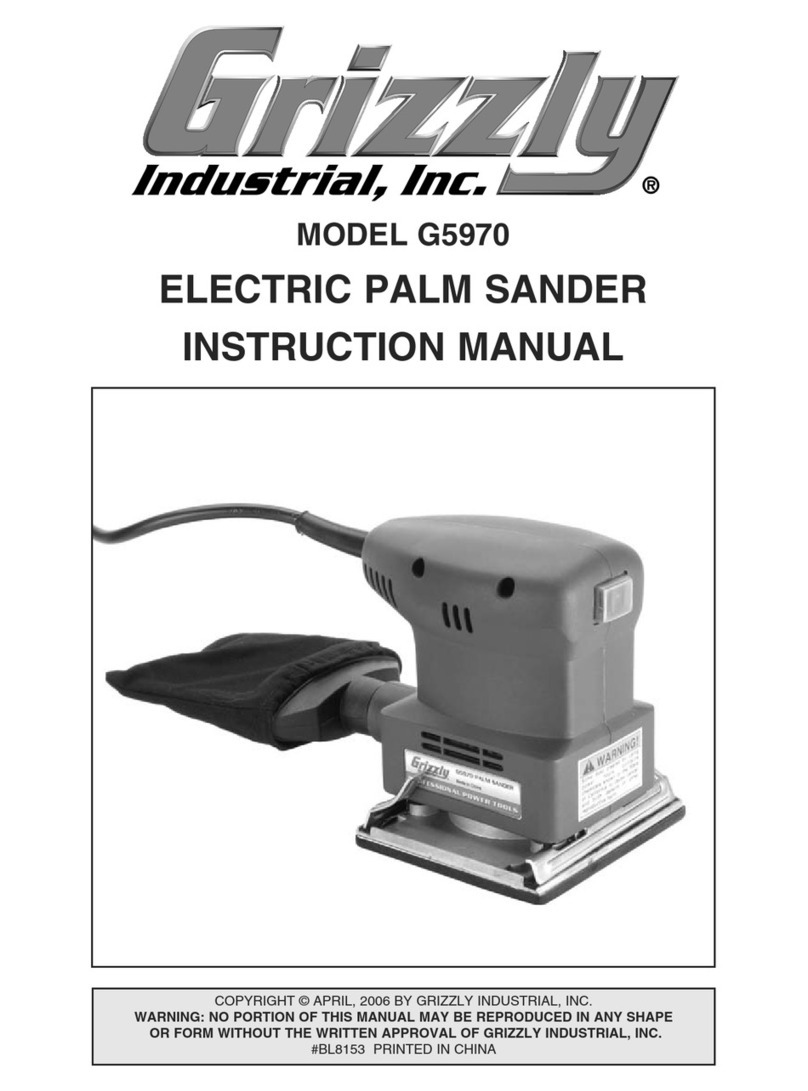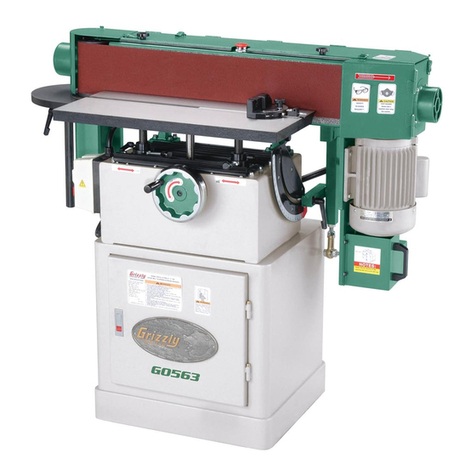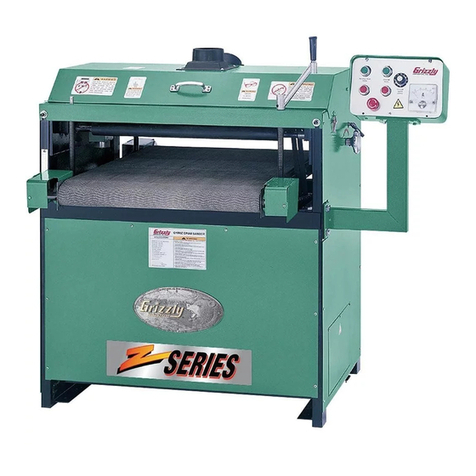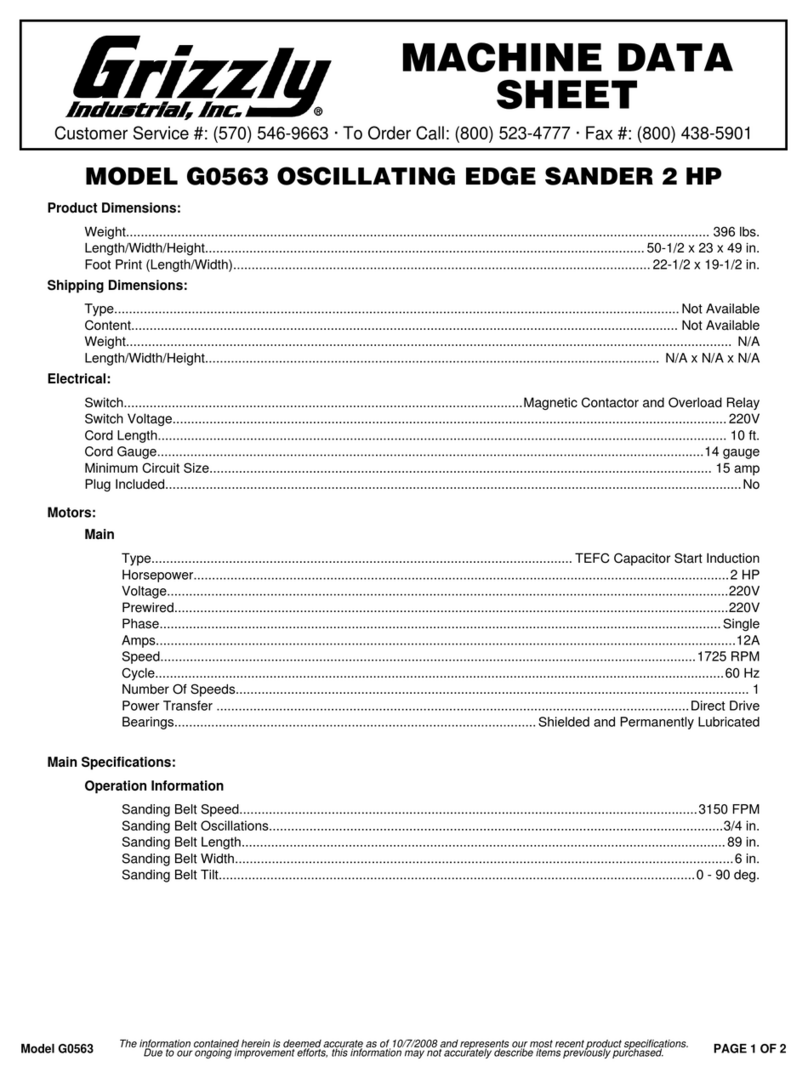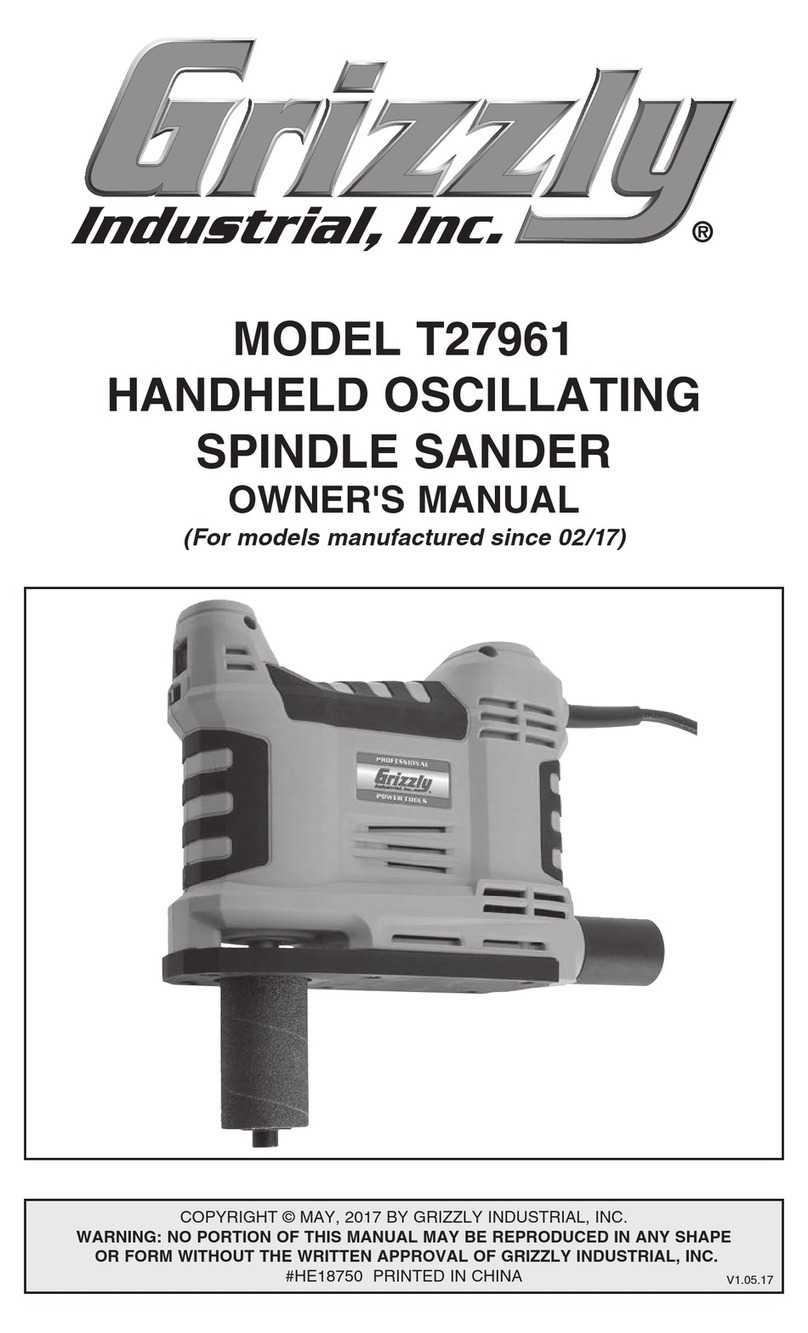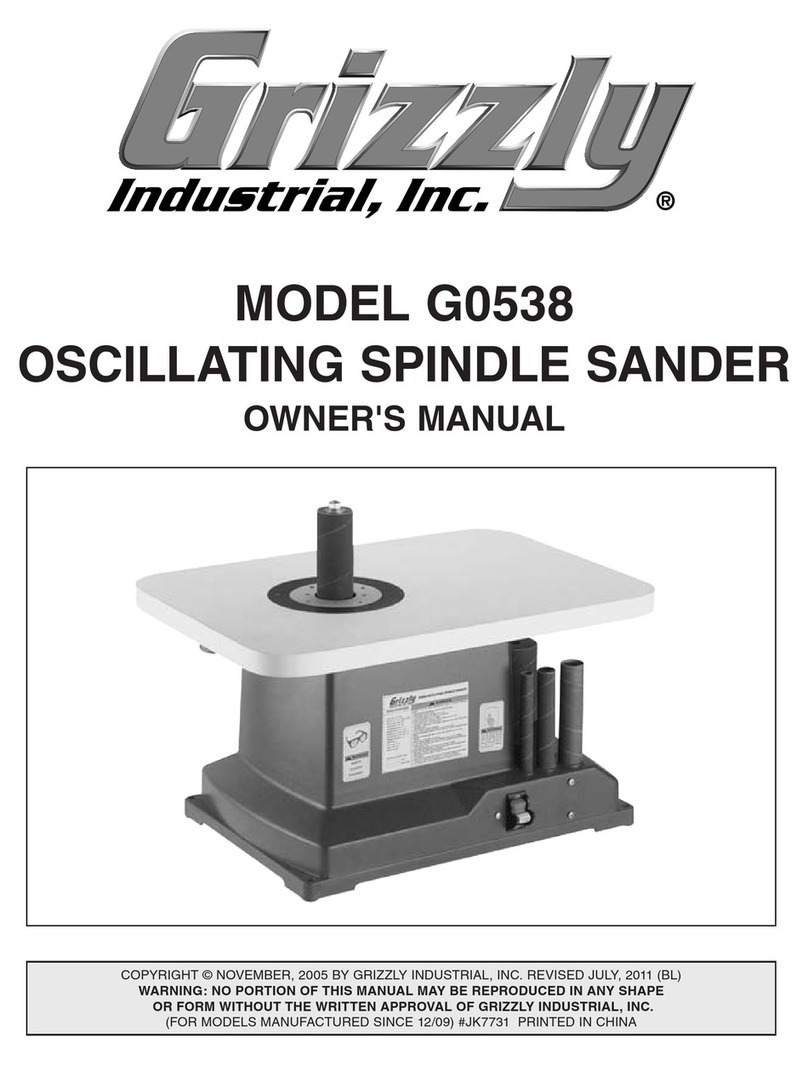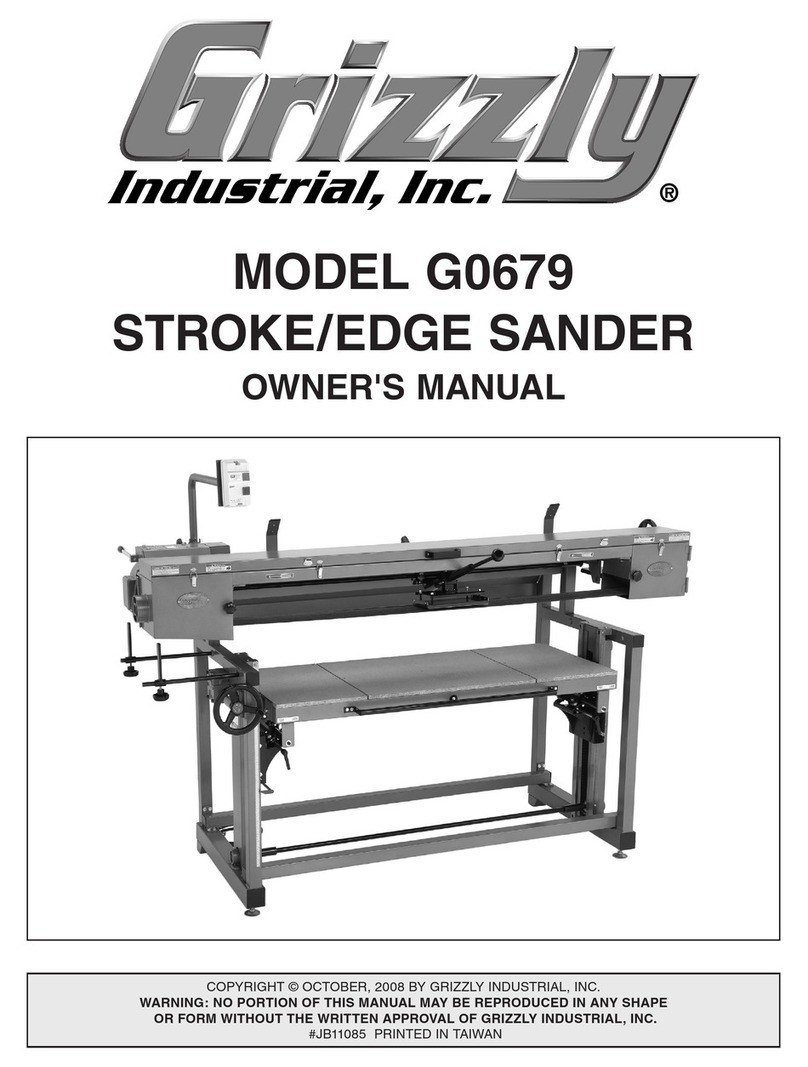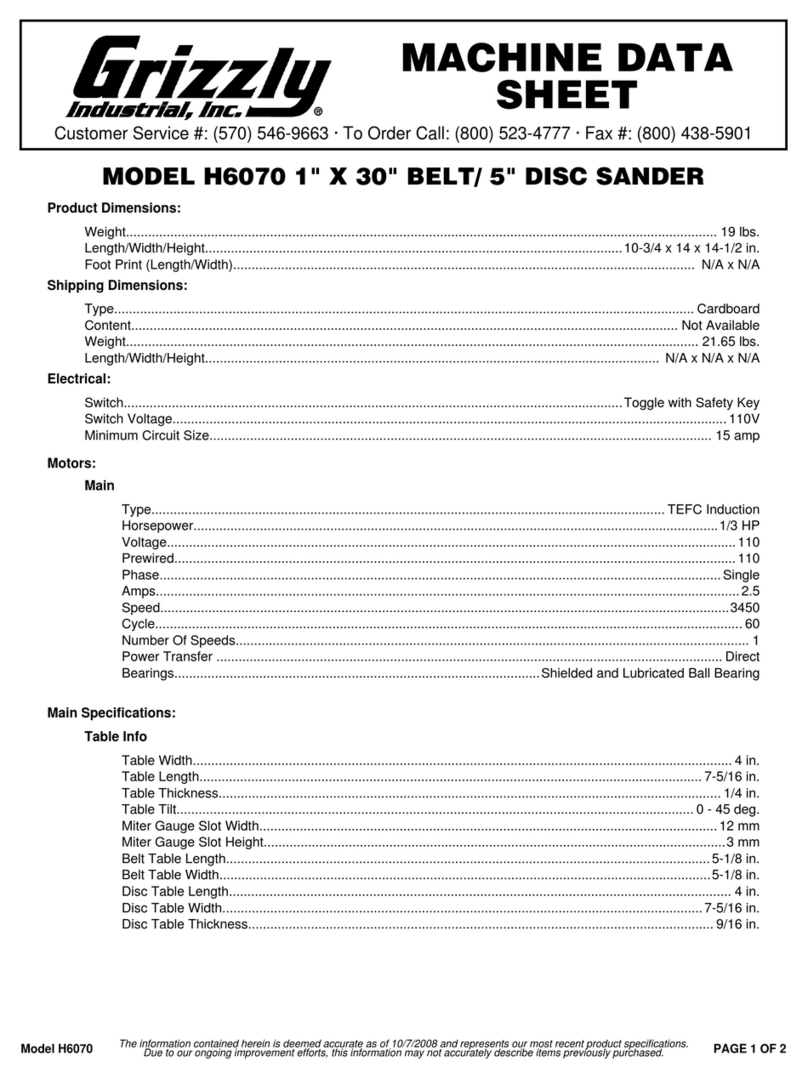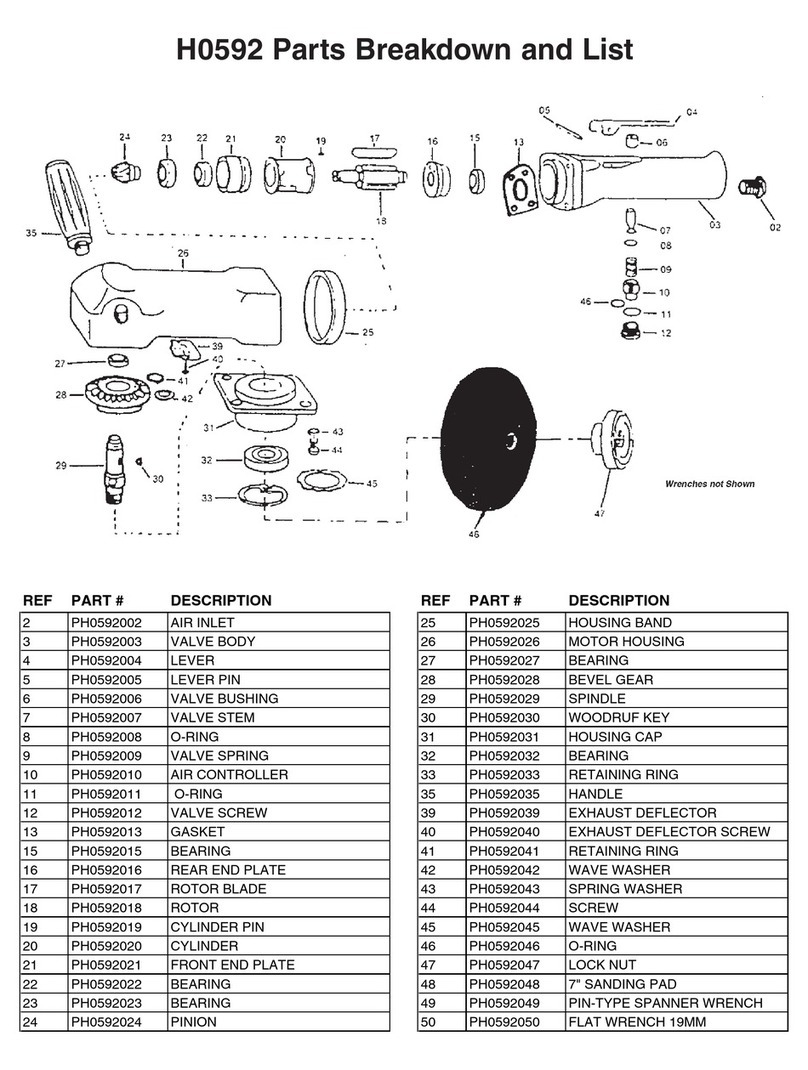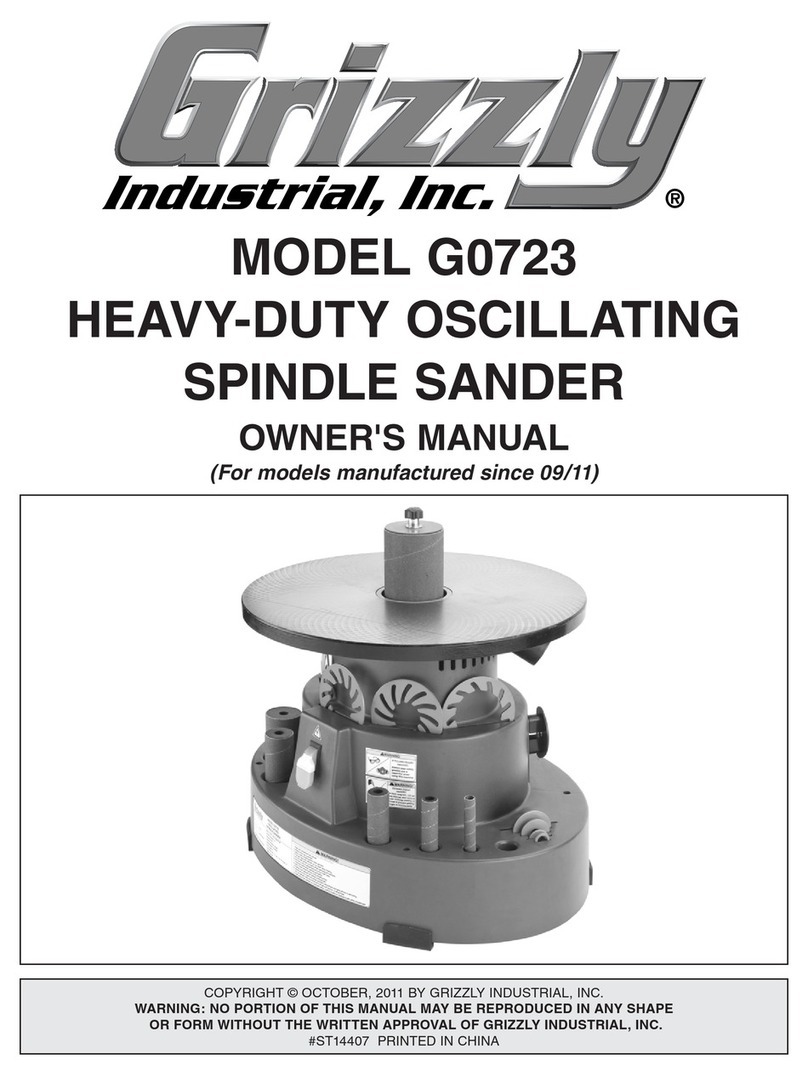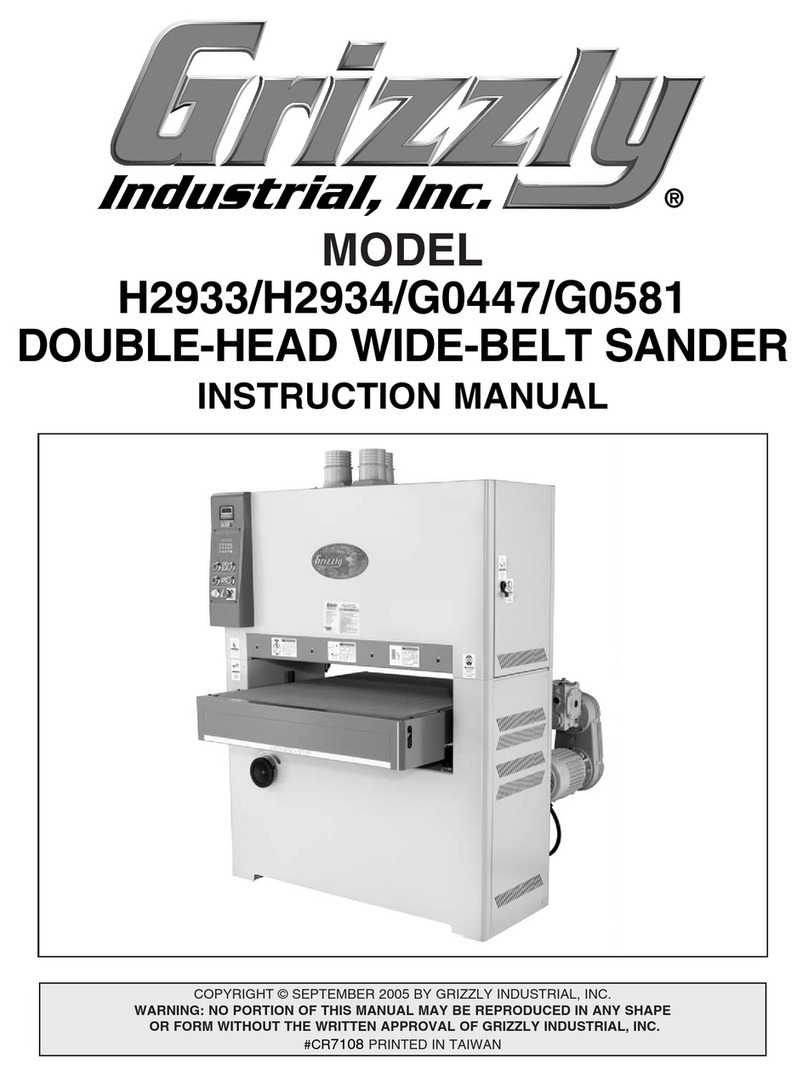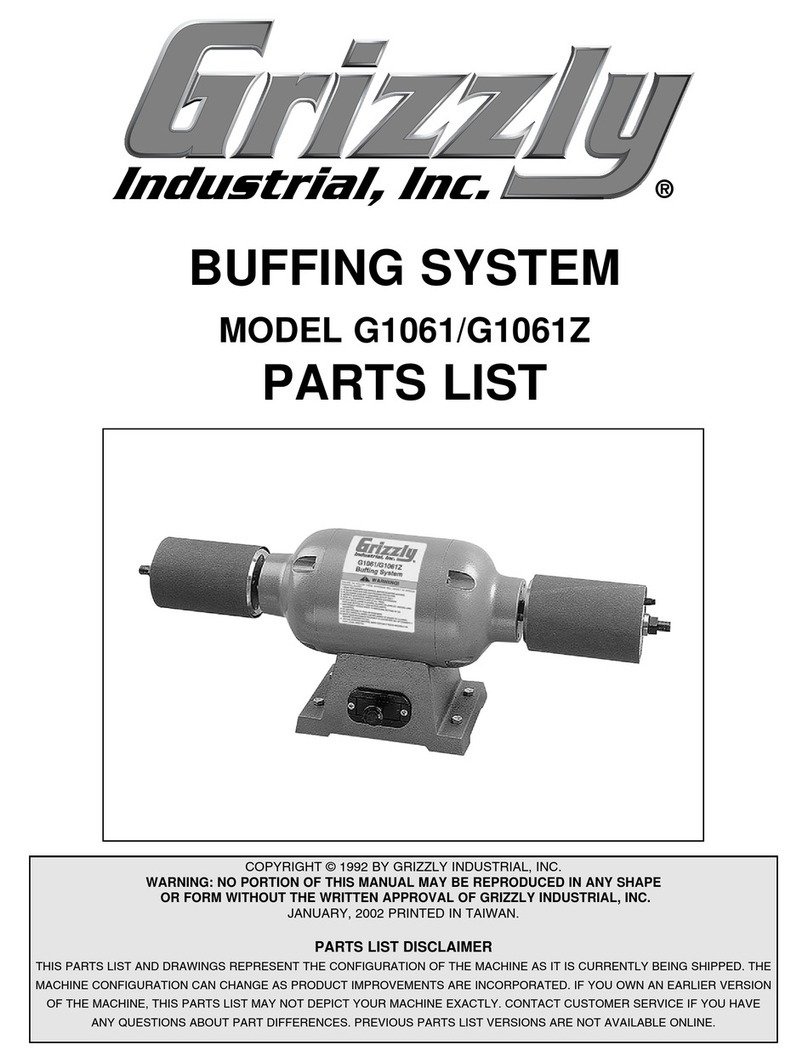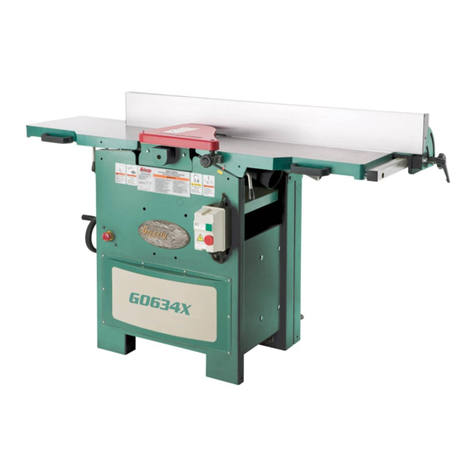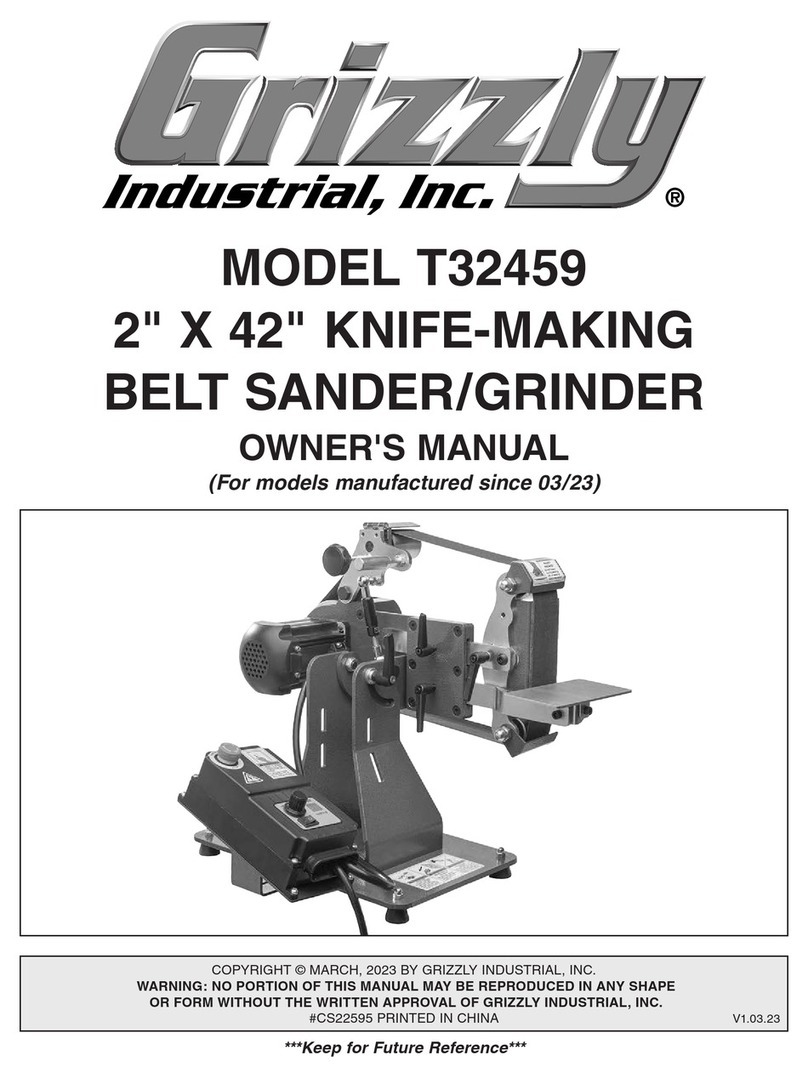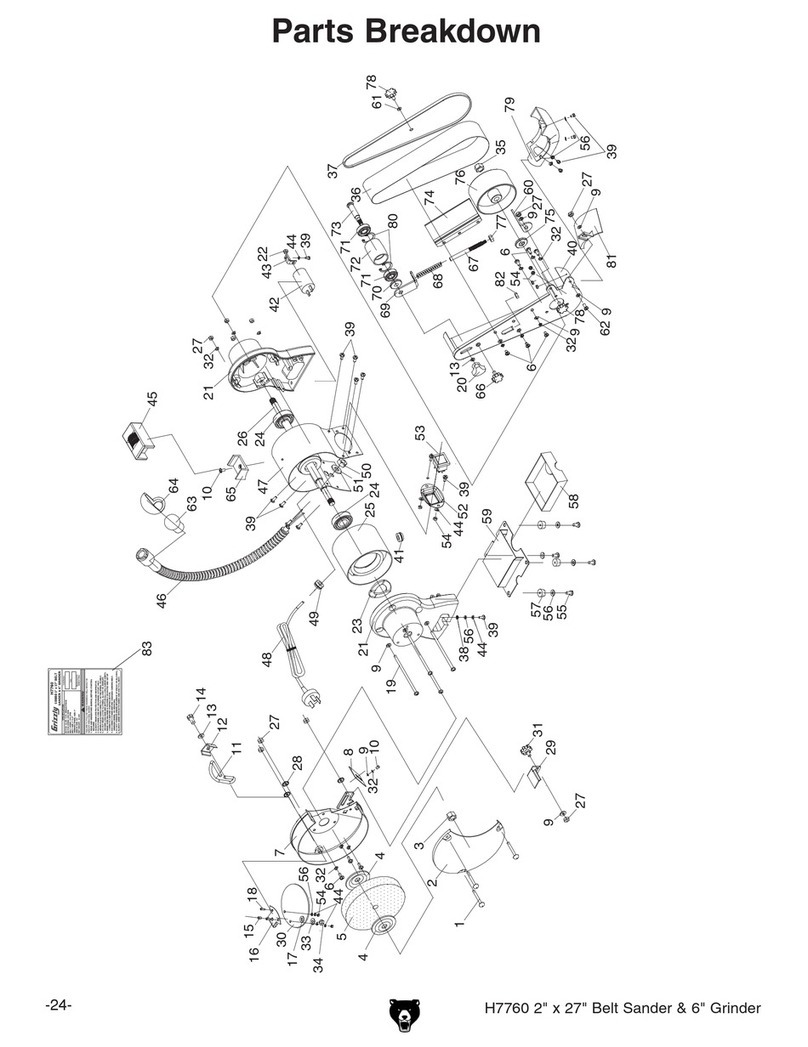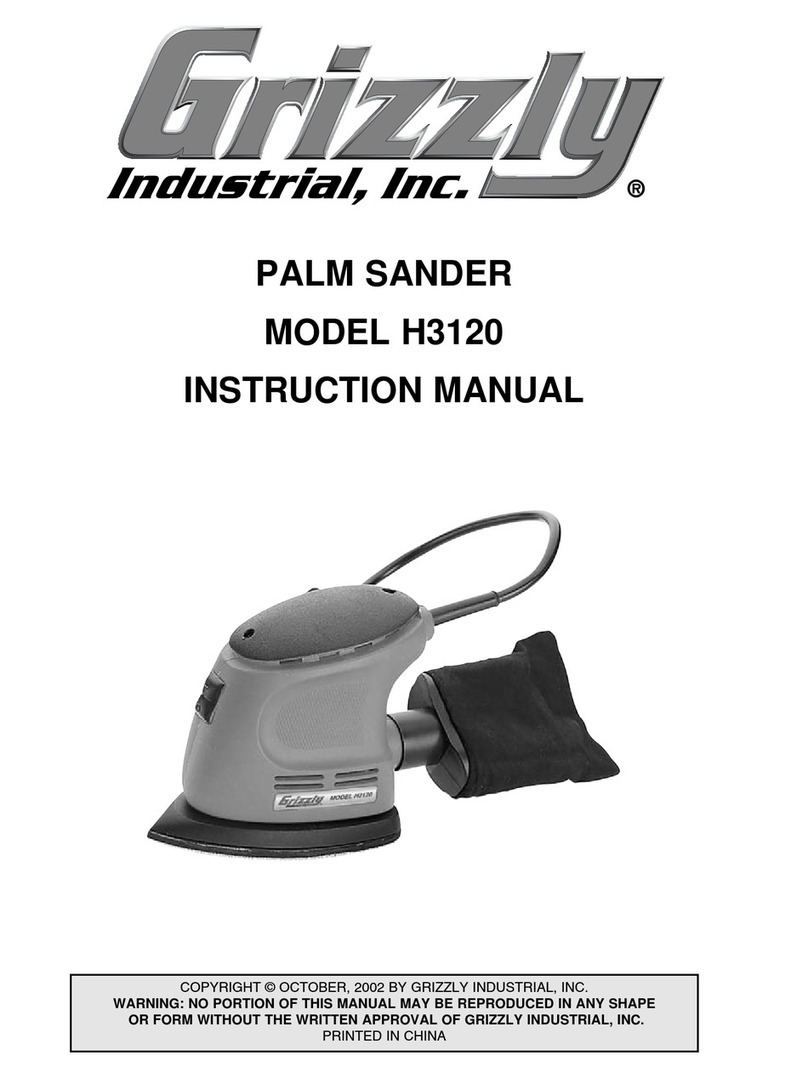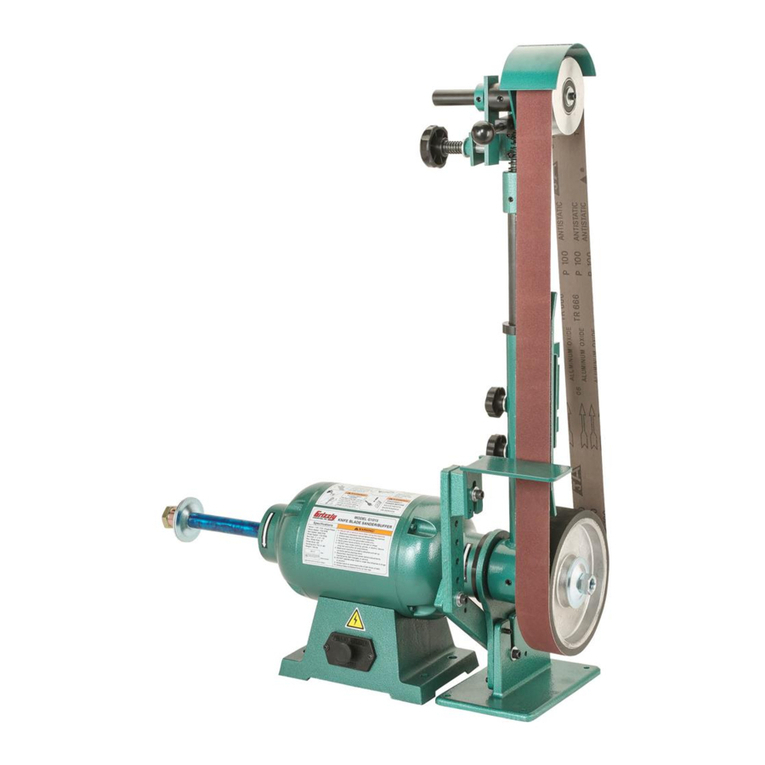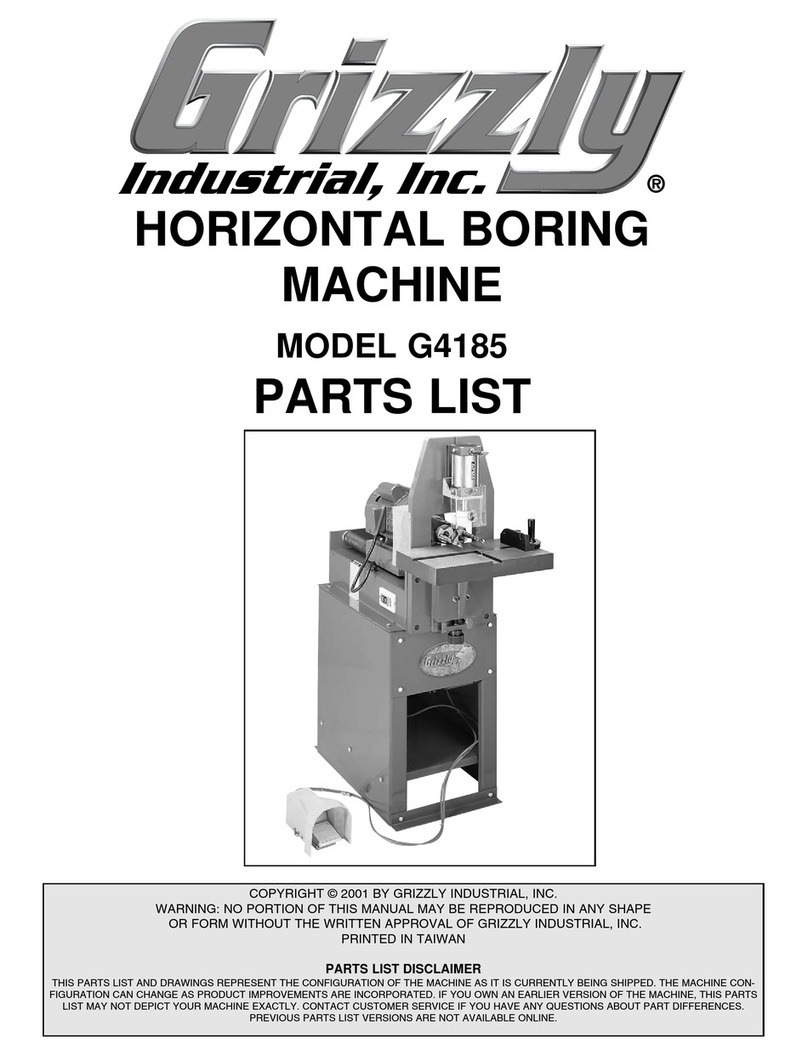Table Of Contents PAGE
1. SAFETY
SAFETY RULES FOR POWER TOOLS ..........................................................................................2-3
SAFETY RULES FOR THE WIDE BELT SANDER ............................................................................4
2. INTRODUCTION ........................................................................................................................................5
3. CIRCUIT REQUIREMENTS ......................................................................................................................6
220V SINGLE-PHASE..........................................................................................................................6
GROUNDING ......................................................................................................................................7
EXTENSION CORDS ..........................................................................................................................7
WIRING ................................................................................................................................................7
4. MACHINE FEATURES................................................................................................................................8
EXTERNAL FEATURES ......................................................................................................................8
CONTROL PANEL ..............................................................................................................................8
ACCESS DOORS ................................................................................................................................9
5. SET UP......................................................................................................................................................10
UNPACKING ......................................................................................................................................10
PIECE INVENTORY ..........................................................................................................................10
HARDWARE RECOGNITION CHART ..............................................................................................11
CLEAN UP..........................................................................................................................................12
SITE CONSIDERATIONS ..................................................................................................................12
BEGINNING ASSEMBLY ..................................................................................................................13
HANDWHEEL HANDLE ....................................................................................................................13
PLATEN..............................................................................................................................................14
AIR HOSE ..........................................................................................................................................15
SANDING BELT ................................................................................................................................15
SANDING BELT TENSION ................................................................................................................16
PRESSURE ROLLERS ......................................................................................................................16
DUST COLLECTION..........................................................................................................................17
TEST RUN ....................................................................................................................................17-18
RECOMMENDED ADJUSTMENTS ..................................................................................................18
6. OPERATIONS ..........................................................................................................................................19
BEFORE STARTING..........................................................................................................................19
CHOOSING SANDPAPER ................................................................................................................19
CONVEYOR HEIGHT ........................................................................................................................20
FEED BELT SPEED ..........................................................................................................................20
LOAD METER ....................................................................................................................................21
OPERATION ......................................................................................................................................21
PLATEN DEPTH ................................................................................................................................22
CLEANING PADS ..............................................................................................................................22
7. MAINTENANCE ........................................................................................................................................23
GENERAL ..........................................................................................................................................23
LUBRICATION ..................................................................................................................................23
CLEANING SANDING BELTS ..........................................................................................................23
EMPTYING FILTERS ........................................................................................................................23
MAINTENANCE LOG ........................................................................................................................24
8. SERVICE ADJUSTMENTS ......................................................................................................................25
OSCILLATION TIMING ................................................................................................................25-26
OSCILLATION SPEED ......................................................................................................................26
OSCILLATION RETURN....................................................................................................................27
LIMIT SWITCHES ..............................................................................................................................27
PRESSURE ROLLER DEPTH ..........................................................................................................28
PRESSURE ROLLER TENSION ......................................................................................................29
FEED BELT TENSION ......................................................................................................................30
FEED BELT TRACKING ....................................................................................................................30
V-BELT TENSION ..............................................................................................................................31
REPLACING V-BELTS..................................................................................................................31-32
PLATEN GRAPHITE ..........................................................................................................................33
AIR SYSTEM......................................................................................................................................33
REPLACING BRAKES ......................................................................................................................34
SERVICE LOG ..................................................................................................................................35
9. CLOSURE ................................................................................................................................................36
DATA SHEET ........................................................................................................................................................37
AIR SYSTEM..........................................................................................................................................................38
WIRING DIAGRAM ..........................................................................................................................................39-41
PARTS BREAKDOWN ....................................................................................................................................42-51
TROUBLESHOOTING......................................................................................................................................52-53
WARRANTY AND RETURNS................................................................................................................................54
